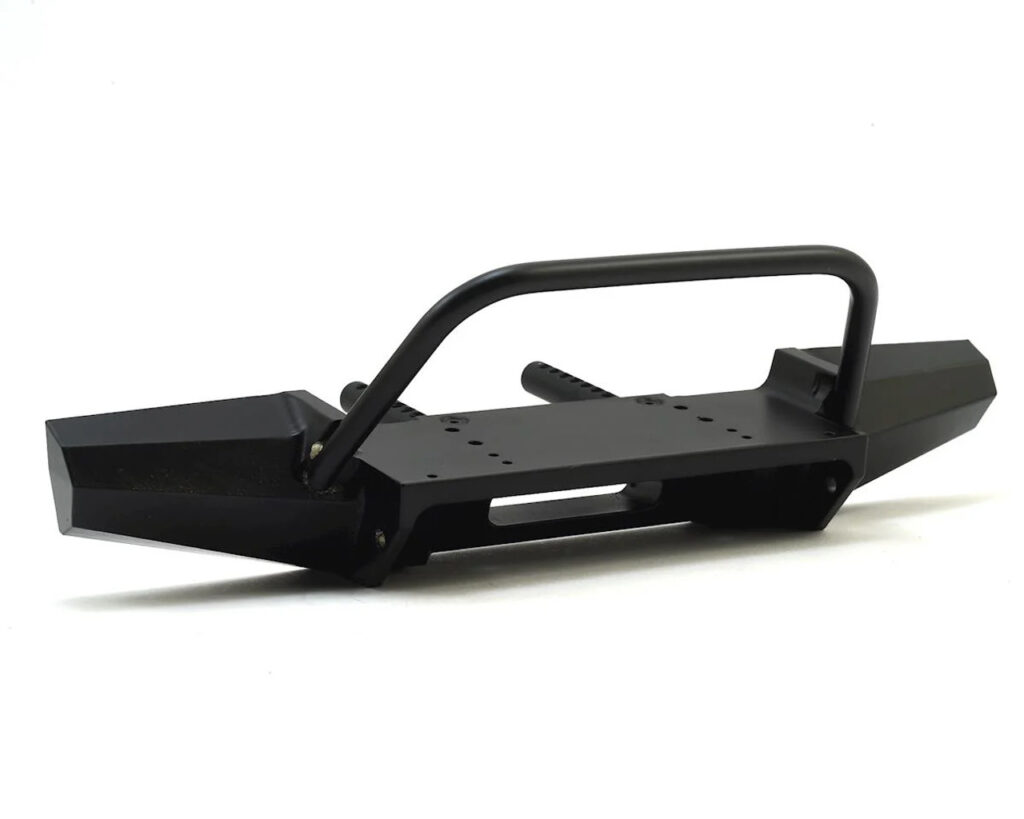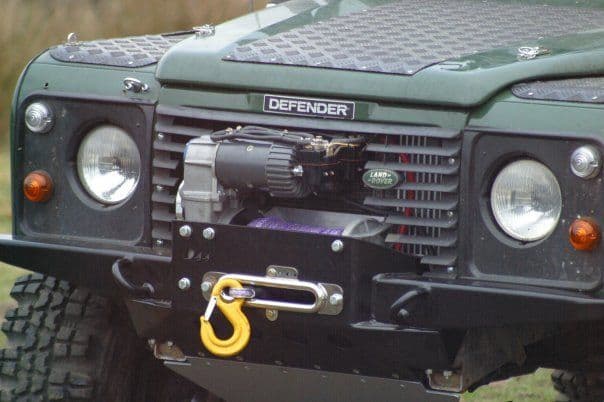When it comes to off-road adventures, having the right equipment is essential for a safe and enjoyable experience. One piece of gear that many overlanders and rock crawlers swear by is a winch bumper.
But what exactly is a winch bumper, and how does it work?
This comprehensive guide will answer all your questions and provide valuable insights into the functionality and usage of these rugged accessories.
What is a Winch Bumper?

A winch bumper is an engineered front bumper designed to house a winch while providing robust protection to the front of your vehicle.
It integrates seamlessly with the vehicle’s design, transforming it into a recovery-ready powerhouse.
There are several types of winch bumpers to suit various off-road needs and vehicle styles:
- Full-width bumpers cover the entire front end, offering maximum protection.
- Stubby bumpers provide coverage to essential areas, optimizing the approach angle for difficult terrains.
Common materials used in the construction of winch bumpers include steel for its durability and strength, and aluminum, which offers a lighter alternative without sacrificing toughness.
How Does a Winch Bumper Work?
Installing and utilizing a winch bumper on your off-road vehicle involves a combination of proper selection, installation, and operation. Here’s a step-by-step breakdown:
1. Choosing the Right Winch and Bumper
The first step in the process is to select a winch and a bumper that are compatible with each other and suitable for your vehicle’s specifications. This includes:
- Winch Capacity: The winch’s weight capacity should be appropriate for your vehicle. A general rule of thumb is to choose a winch that can pull at least 1.5 times the weight of your vehicle to ensure it can handle most recovery situations.
- Bumper Compatibility: The winch bumper must fit your vehicle’s make and model. It should also have the structural integrity to support the winch’s force without deforming.
2. Installation of the Winch on the Bumper
After selecting the appropriate winch and bumper, the next step is installation:
- Mounting the Winch: Secure the winch onto the bumper, which typically has a built-in mounting plate designed for this purpose. This plate ensures that the winch can be bolted down securely, distributing the pulling force evenly across the bumper’s surface.
- Electrical Connections: Connect the winch’s power cable to your vehicle’s battery. This connection powers the winch’s motor.
- Routing the Cable: Thread the winch cable (made of steel or a synthetic material for durability and strength) through the fairlead, a device mounted on the bumper that guides the cable to prevent tangling and wear.
3. Operation of the Winch
Operating the winch involves several steps, primarily when you need to recover your vehicle or assist others:
- Anchoring: The cable is extended to be attached to a secure anchor point—typically another vehicle, a tree, or any stable structure capable of handling the load.
- Using the Motor: Activate the winch motor via a remote control, which allows you to wind or unwind the cable safely from a distance. This control helps in managing the direction and speed of the winch, ensuring precise and safe pulling.
- Pulling: As the motor operates, the cable pulls on the anchor point, creating a force that assists in moving your vehicle from a stuck position or helps in other recovery tasks.
4. Integration Benefits
Integrating the winch within the bumper has several advantages:
- Aesthetic and Practical Design: The winch bumper is designed not only to enhance the vehicle’s appearance but also to protect the winch and vehicle during rigorous off-road activities.
- Enhanced Durability and Performance: The robust mounting on the bumper ensures that the winch operates at peak efficiency, with minimal risk of shifting or damage under load, thereby optimizing performance in recovery scenarios.
Benefits of Installing a Winch Bumper on Your Vehicle

Installing a winch bumper on your off-road vehicle enhances its capabilities and safety in several key ways:
1. Enhanced Protection
A winch bumper is constructed from durable materials like heavy-duty steel or aluminum, which serve as a robust shield for the front of your vehicle.
This protection is crucial when navigating off-road terrains, where encounters with rocks, tree stumps, and other obstacles are common.
The bumper absorbs and deflects impacts that could otherwise damage critical components of your vehicle such as the grille, headlights, and engine components.
This robust barrier ensures that minor collisions or scrapes won’t sideline your adventure.
2. Improved Approach Angle
The design of a winch bumper is particularly beneficial for improving your vehicle’s approach angle.
The approach angle is the maximum angle of a ramp or obstacle that your vehicle can climb without any part of the bumper or front underside making contact.
Winch bumpers are often designed to be more compact or have angled edges compared to standard bumpers.
This design reduces the likelihood of the bumper hitting the ground when tackling steep inclines or dips, thereby enhancing the vehicle’s ability to handle challenging terrain without sustaining damage.
3. Ease of Winch Operation
A winch bumper integrates the winch directly into the bumper’s structure, placing it at an accessible height and in a central location. This strategic placement has several advantages:
- Accessibility: The winch controls are easily reachable, which is particularly useful in emergency situations or during complex recovery tasks.
- Visibility: Operators can better see the winch and cable, which improves safety and efficiency when managing the winch line.
- Protection: The bumper design protects the winch itself from the elements and from debris kicked up during travel, which can extend the life of the winch.
4. Additional Mounting Points
Winch bumpers come equipped with additional mounting points that are engineered to support extra accessories. These features enhance the functionality of your vehicle by allowing for:
- Lighting: Extra lights can be mounted on the bumper, improving visibility during night-time or in poor weather conditions.
- Recovery Gear: Points for attaching hooks, shackles, or straps are often included, which are essential for towing or being towed.
- Utility Upgrades: Some bumpers offer modular attachments like brush guards or carrier racks, further enhancing the vehicle’s utility.
Off-Road Recovery Techniques with a Winch Bumper
Effective recovery techniques are essential for safe off-roading:
- Safe Winching Practices: Always follow safety guidelines to prevent accidents during winch operations.
- Proper Setup of Winch Lines and Anchors: Ensure your anchor points are solid and your winch line is correctly positioned to handle the load.
- Self-recovery and Assisting Others: Be prepared with the right techniques and tools to assist yourself and others in recovery scenarios.
Also check:
Conclusion
A winch bumper is more than just an accessory; it’s an investment in safety and versatility for off-road adventures.
By understanding its functionality, benefits, and maintenance, you can enhance your off-road experience and tackle challenging environments with confidence.
Remember, the right winch bumper not only increases the capability of your vehicle but also ensures that you and your fellow adventurers can explore the great outdoors safely and effectively.
Explore further resources and join off-roading communities to share experiences and continue learning about the exciting world of off-road navigation.

